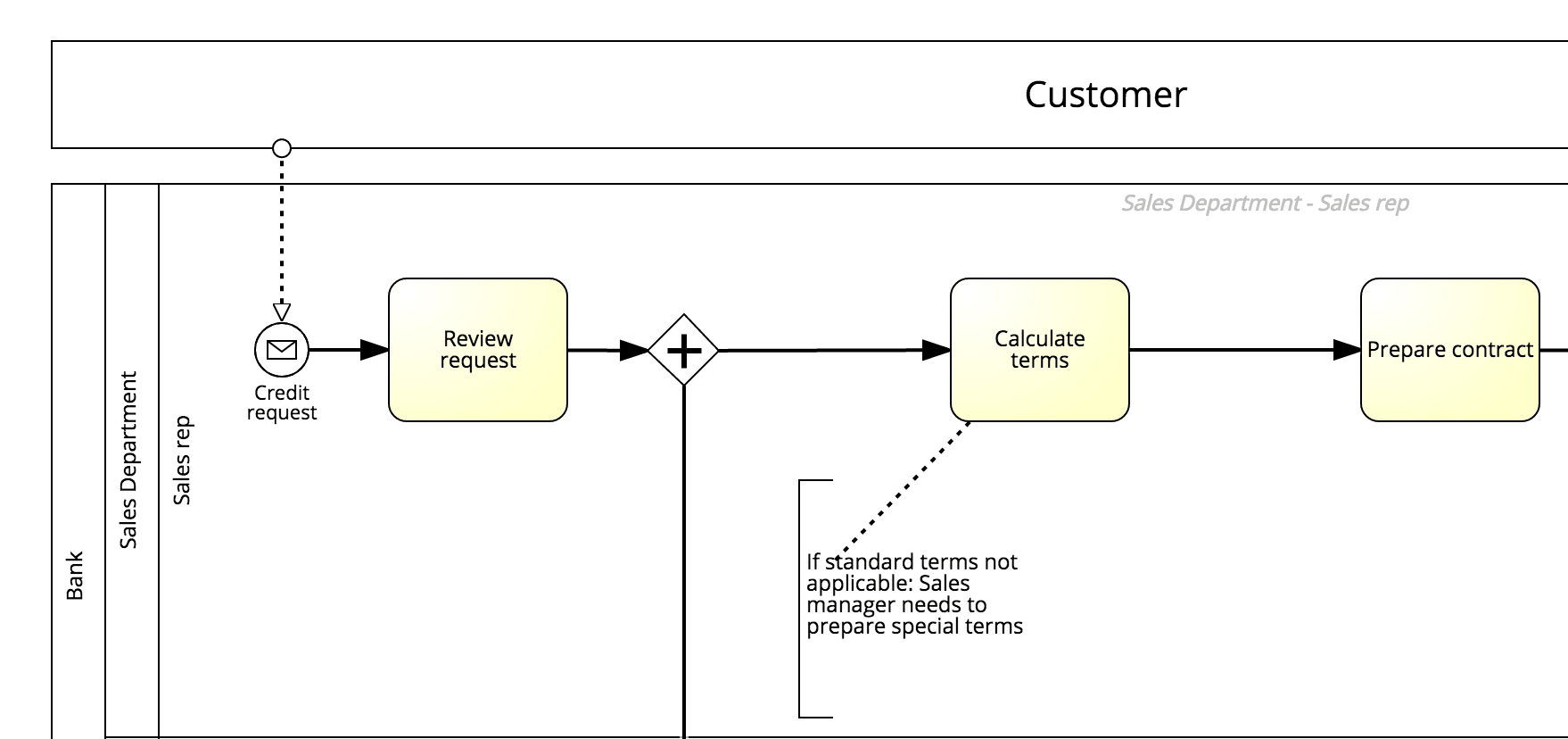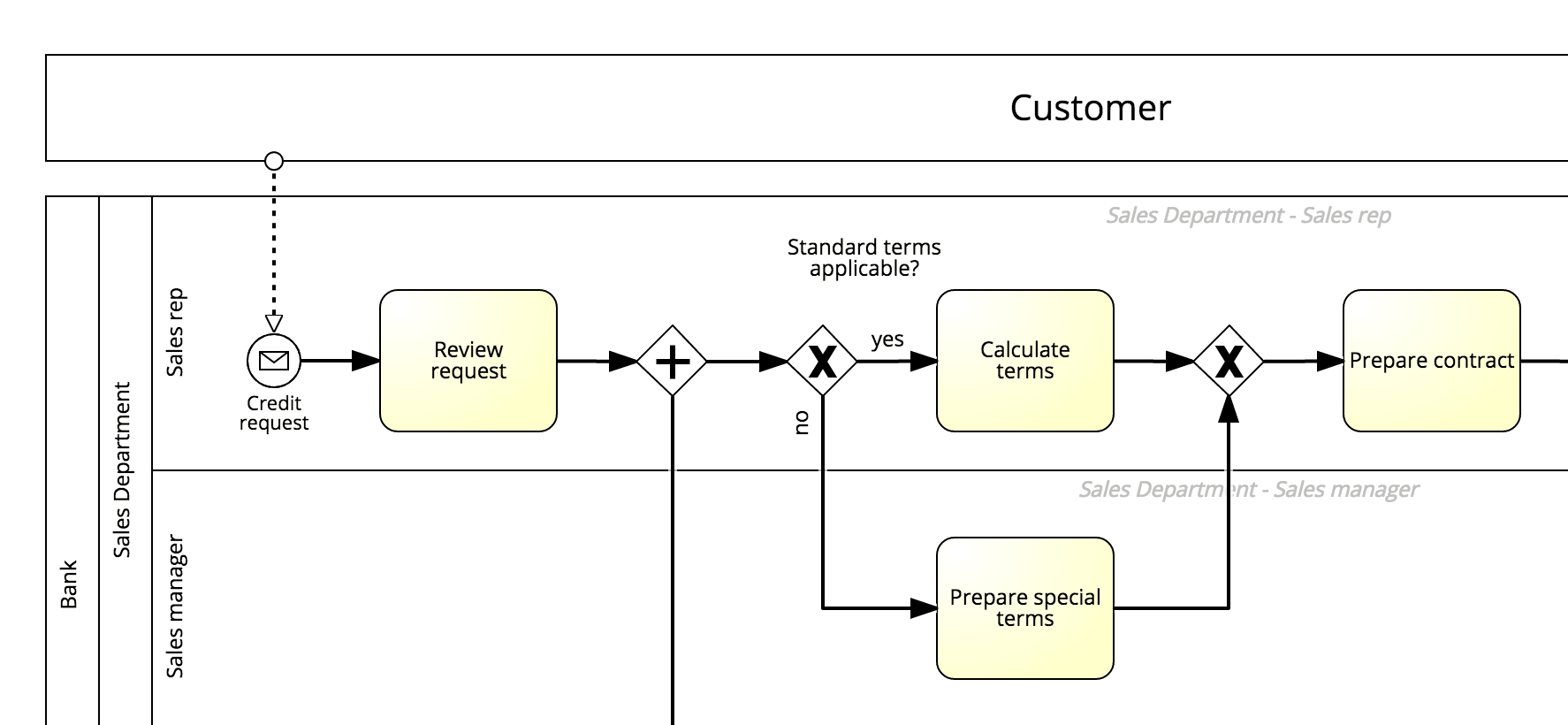This concept should be formed by criteria that are easy to understand and memorize, even by people who don’t have an in depth knowledge of BPMN. Like this, you can raise quality awareness throughout your entire organization.
Based on these high-level criteria, you can then create a set of lower level modeling conventions, which the Signavio Process Editor and Signavio Decision Manager can enforce automatically.
To increase quality awareness, understanding Bruce Silver’s four properties of “good BPMN” models - correctness, clarity, completeness and consistency - serve as a good starting point.
This blog posts explains these properties by example.
1) Correctness of business process models
Of course, a BPMN diagram should comply with the syntax rules of the BPMN specification.
For example, connecting two pools with a sequence flow is syntactically not correct.
Pools impose organizational boundaries and crossing them requires a well-defined interface.
It is important to be able to refer to the BPMN specification as a single source of truth of a model’s syntactical foundation, especially to avoid problems when transferring the diagram between systems.
The syntactical correctness of diagrams can be checked automatically in the Signavio Process Editor.
2) Clarity of business process models
A good modeling style goes beyond mere syntactical correctness. Process models should be easily and unambiguously understandable. Therefore, you should not hide process details within textual descriptions.
In the example below, a deviation from the process flow is specified by an annotation.
It requires a short analysis to derive the implications of the annotation. We need to add exclusive gateways (join and split), and an additional task that is executed by a new role (lane):
3) Completeness of business process models
A good BPMN model provides a complete description of a business process as a sequence between one or multiple start and end events.
Let’s have a look at a snippet of the previous example diagram without an explicitly modeled start event.
In this example, it’s up to the viewer to interpret what and whose request the sales rep has to review. Generally, such ambiguity is prone to promote confusion among readers.
4) Consistency of business process models
It’s crucial that your process models are consistent in the way they represent reality.
Let’s take the object ‘Customer Relationship Management System’ as an example. When modeling carelessly, one modeler might refer to the system as ‘CRM System’, while another labels it ‘CRMS’.
This creates problems - latest when you try to adjust the properties of all CRM system elements in your process landscape. Therefore, all references to a CRM System should point to a central object definition.
To facilitate the consistent use of terms and object definitions, you can use the Signavio Dictionary. However, we recommend you assess the consistency of other aspects of your process models - for example the level of detail of your process landscape - as well.
Conclusion
Communicating a simple set of criteria of good BPMN models facilitates quality awareness and helps you improve the accuracy and readability of your business process landscape.
Of course, the aforementioned properties are not the only quality criteria you can employ.
For example, the ‘Guidelines of Modeling’ - Clarity, Relevance, Comparability, Economic Efficiency and Systematic Design - are an attempt by academic scholars to establish high-level criteria good process models should fulfill. If you are an experienced BPM practitioner, you can assemble your own set of assessment criteria, tailored to the needs of your organization.
Pro tip - Applying the quality criteria to DMN models
While the four criteria originally described good BPMN models, they can be applied to DMN as well.
Self-evidently, a good decision diagram must
- have correct execution semantics,
- lay out a clear structure that employs sub decisions if necessary,
- provide complete mapping of all possible input/output combinations,
- employ data objects that are consistent with your real-life data.
Do you want to get started with collaborative business process management? Try the Signavio Process Editor now for free by registering for our 30-day free trial.






